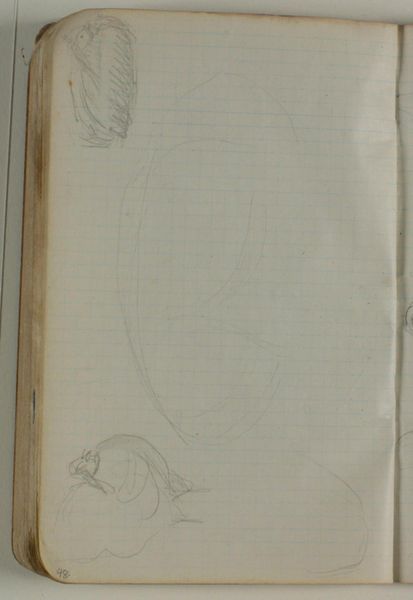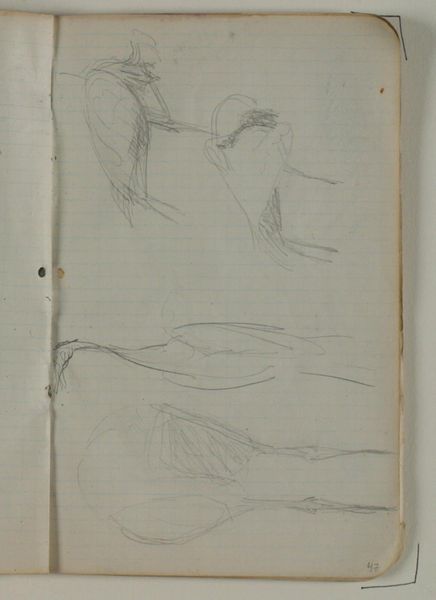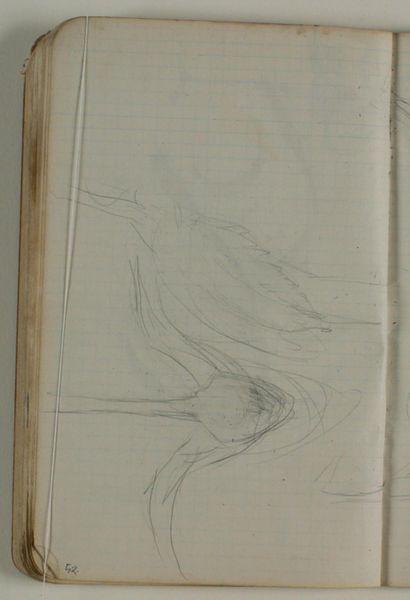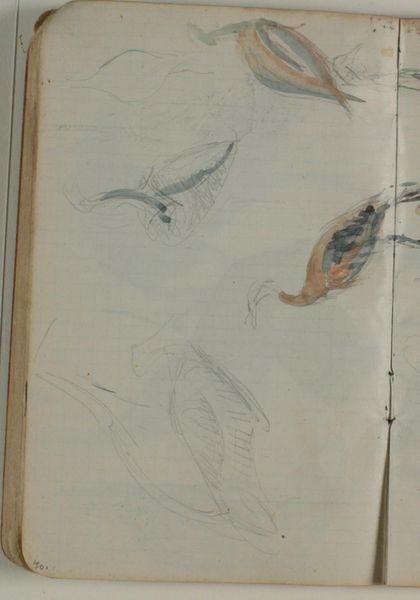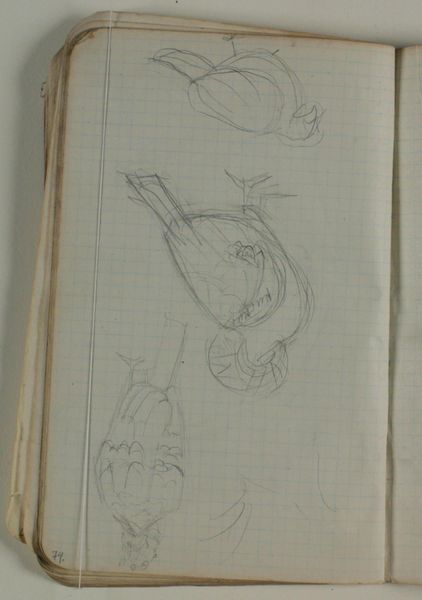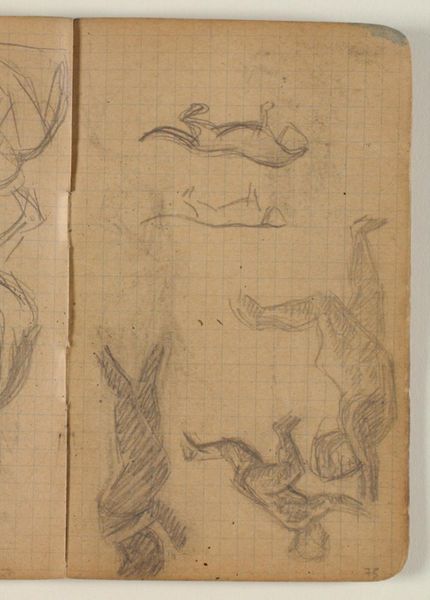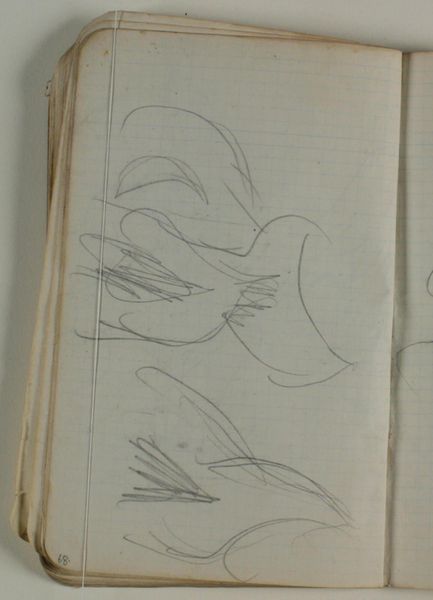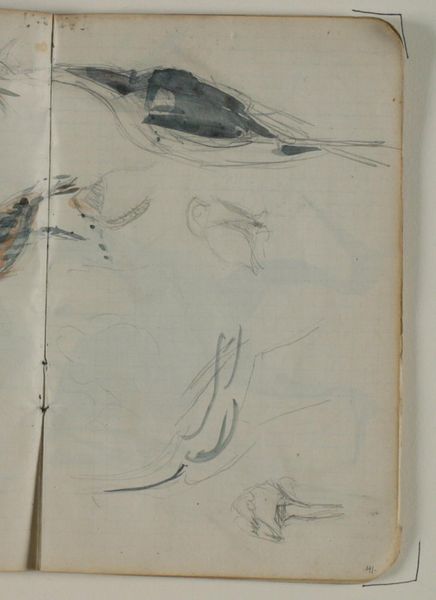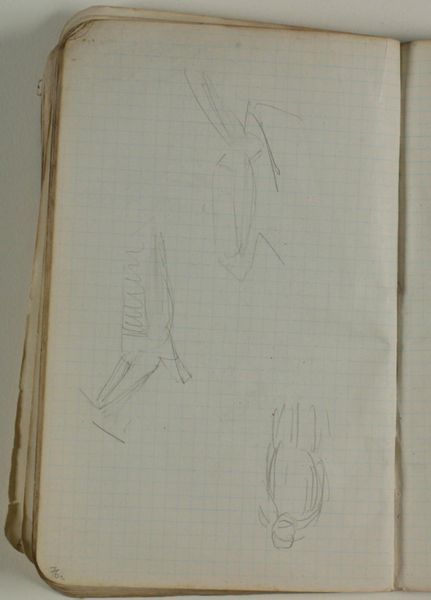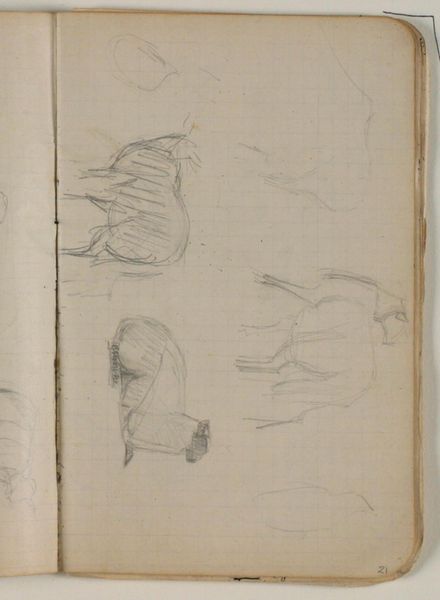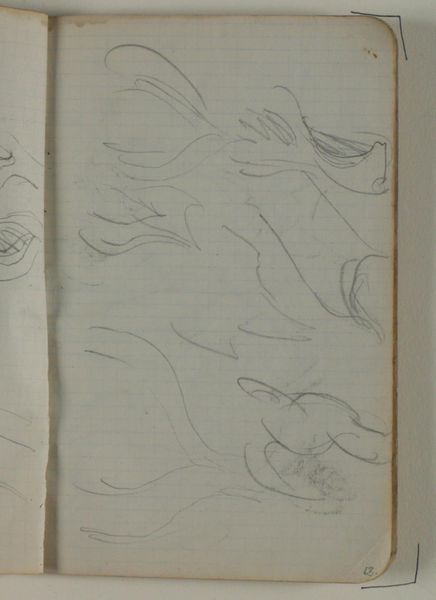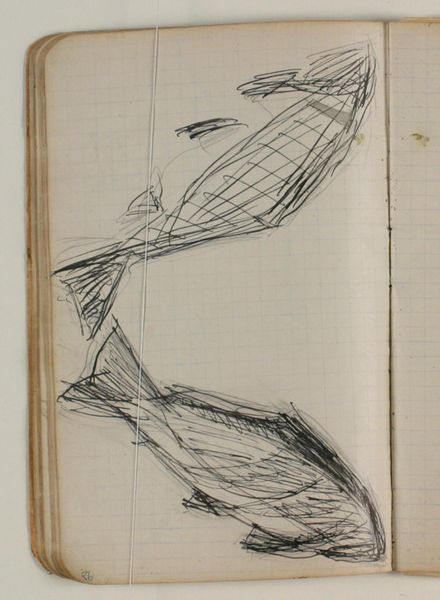
drawing, paper, pencil, graphite
#
drawing
#
landscape
#
paper
#
pencil
#
graphite
Dimensions: 175 mm (height) x 110 mm (width) (bladmaal)
Curator: Immediately, I see vulnerability. There's an undeniable softness to the strokes, an almost tentative quality. It feels like observing a fragile thought forming on paper. Editor: Indeed. Here we have Niels Larsen Stevns’s “Skitser af traner”, created between 1900 and 1905. It’s part of the collection at the SMK, Statens Museum for Kunst. Executed with pencil and graphite on paper, these sketches offer an intimate glimpse into the artist’s observation of cranes. Curator: Cranes, with their symbolism of longevity and marital fidelity across many cultures. But here, they appear unfinished, not quite fully realized. Is this Stevns showing the essence of the bird rather than the finished product? Editor: It prompts us to think about what constitutes completion in art. Stevns was working during a period where artists increasingly questioned academic norms, focusing instead on capturing fleeting impressions and personal experiences. Perhaps the sketches, then, become more about process and the artist's immediate response to nature, than a finished ornithological study. Curator: And the very act of sketching… it's so immediate, so human. The tentative lines, the corrections - they show the artist’s hand and mind at work in real time. It's an interesting parallel; we project a lot of values, virtues, onto Cranes, but we might be more rewarded reflecting on how we think about “realization” in that bird, versus “potential” in a simple graphite outline. Editor: Absolutely. Stevns, during the late 19th and early 20th centuries, contributed to a national romantic movement deeply concerned with exploring themes of landscape and the human connection to the natural world. Viewing these crane studies, it raises broader questions regarding conservation and respect for other lifeforms which are increasingly vulnerable within industrialized landscapes. These Sketches aren’t mere depictions but become an advocacy tool reflecting humanity’s imprint. Curator: It really encourages me to reflect on that moment of creation, that fragile bridge between artist and subject, thought and form. It reminds me that sometimes, the greatest beauty lies not in perfect realization, but in the potential held within a simple line. Editor: For me, it's the social commentary inherent in celebrating an endangered species through an accessible and egalitarian medium such as graphite on paper; that makes this piece an important reminder of our collective responsibility to value natural habitats and document the beauty and fragility of the wildlife around us.
Comments
No comments
Be the first to comment and join the conversation on the ultimate creative platform.
